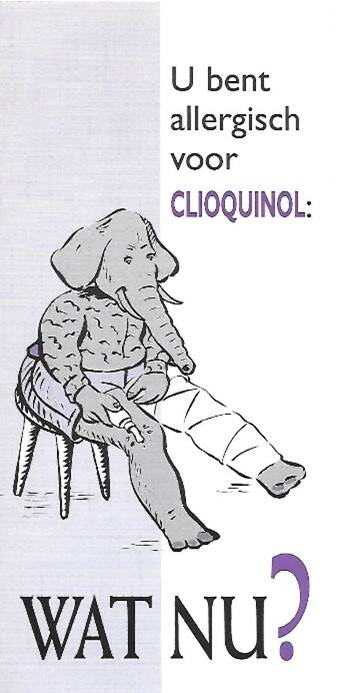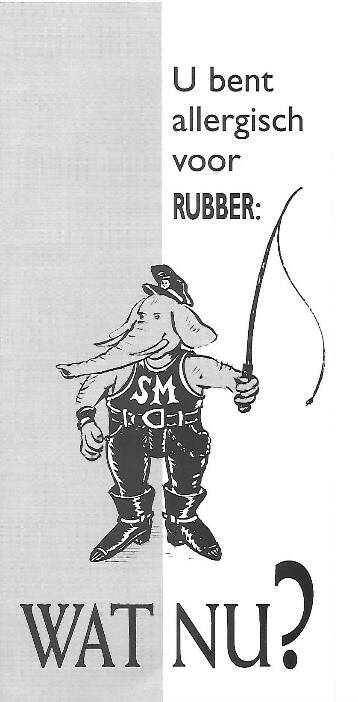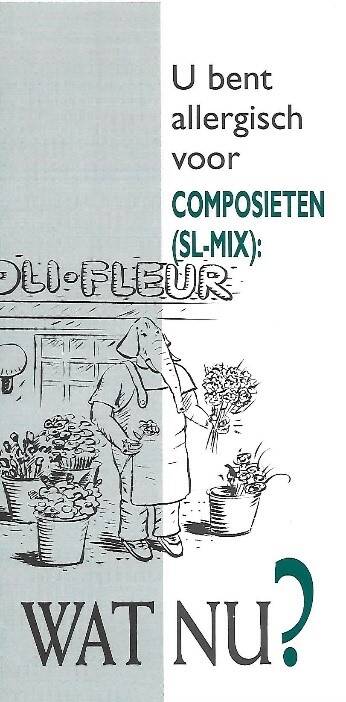Towards a high quality practice
Providing high quality medical-dermatological care is a prerequisite for a successful career as a dermatologist, but it is not a guarantee for it. I realized early on that non-medical quality aspects, including the way I interacted with other health care workers such as general practitioners, specialists, nurses, paramedics, administrative staff, management and, of course and above all, my patients, would largely determine whether I would have a thriving practice, a good reputation and would enjoy my work. In 2000, with 20 years of experience behind me, I wrote two articles about non-medical quality in the Dutch Journal of Dermatology and Venereology:
- De Groot AC. Niet-medische kwaliteit in de dermatologische praktijk. Het geheim van de succesvolle dokter. I. De relatie met huisartsen, specialisten, verpleging en andere ziekenhuismedewerkers. Ned Tijdschr Derm Venereol 2000;10:253-257
- De Groot AC. Niet-medische kwaliteit in de dermatologische praktijk. Het geheim van de succesvolle dokter. II. De relatie met de patiënt. Ned Tijdschr Derm Venereol 2000;10:285-289
You can read the articles here. If you don't want to read them, equally good friends. Most of you can't read Dutch, I suppose, so I will provide a summary in English below, limited to the relationship with general practitioners (who refer patients to me) and, of course, the patients themselves.
Just for the record: what is described in these articles and summarized below is the ideal situation. The dermatologist always remains friendly, kind, patient and tolerant towards her (nowadays most dermatologists are women) or his patients, general practitioners, staff, and others. This is how it should be, but was I indeed always like this? I'm afraid the answer is a definite no, and the only excuse I can give for it: I'm only human. I have to admit I was regularly a bit grumpy when things weren't running smoothly, for example because the assistant had forgotten to take the next patient to the examination room or because the secretary had made a mistake more than once that day . Then I sometimes would get really angry and I could not always hide the feeling.
Nor will every patient in my practice recognize in me the image of utter kindness, patience and tolerance. I was sometimes in a bad mood (especially during the extended period that an adjecent part of the hospital building was under construction and we were more or less constantly surrounded by the terrible noise of the drill) or terribly tired and then I could be a bit unfriendly, impatient or irritated with my patients. Often I noticed this myself and would apologize immediately, which was always accepted. But should you be a former patient of mine and think 'Well De Groot, you can write it all down nicely, but you certainly didn't stick to it with me', then I would like to apologize to you now, 21-43 years after the fact. Arguments with general practitioners or hospital employees I have never had.
Relationship with general practitioners
In my opinion, family medicine is the most difficult of all medical disciplines. While specialists only need to have knowledge of a limited part of medicine and thus can build up extensive specialist expertise in their field, family medicine covers the entire spectrum of diseases. It stands to reason, therefore, that GPs know far less of many of these diseases than specialists. Moreover, the options of GPs to perform diagnostic testing is limited. This has led, I noticed, to specialists quite often speaking quite denigrating of a general practitioner when he or she had missed a (simple) diagnosis, instituted a (clearly) wrong treatment or had given the wrong advice. Generally speaking, I feel this to be unjustified and in my opinion GPs deserve our respect, sympathy, support and cooperation.
In the first article that I wrote on non-medical quality in dermatology practice, I supplied a large number of recommendations on this topic to the readers, aimed especially at young specialists with limited experience and junior doctors training to become dermatologists. To give an example: I have never spoken negatively to patients of their GP, even when mistakes had clearly been made. Instead, I would rather emphasize positive aspects, such as 'excellent diagnosis made by your GP' or 'your GP is absolutely right about that.' Furthermore, I quickly noticed that GPs like to receive a quick report of findings and recommendations after a consultation, because the patient will sometimes contact his GP with questions. I also always read the referral letter carefully, looking for specific questions (which I would always respond to) and for specific instructions, such as 'after a single consultation please refer back to me'. I always adhered to that, and, when I disagreed, I would call the GP to confer.

I arranged that the GPs always received a letter about the consultation within two weeks, often within a week. I made the salutation personal as soon as I could, after first having contact in a phone call, for example: 'Dear Hans.' At some point I began to do the same with referrers who I did not know personally. The next referral letter from that GP then often began with 'Dear Ton'. Furthermore, I had noticed that most general practitioners liked to supervise the treatment of their patients themselves after a consultation with me, whenever possible. Therefore, I started to work more and more 'consultative': after one consultation I would refer the back to the GP, if justified of course. In the letter to the GP I not only mentioned the diagnosis made and the therapy I had instituted, but also how the GP should proceed with it (for example, tapering off). In addition, I often supplied an alternative therapeutic option in case my treatment was not effective. To be able to do all that I had to build up the necessary experience, so that process was a gradual one.
At one point, as a result, I had a 'repeat factor' of less than 1, i.e., of 100 new referrals, less than 100 repeat (control) consultations followed. The average in the Netherlands was 2.39. This consultative approach was greatly appreciated by the GPs, by the health insurance companies (who had lower costs) and it was also advantageous for myself. Because we had fewer patients for repeat visits, we could schedule more new referrals, which was more exciting and, let's be honest, also resulted in more revenues. In addition, the access time to the outpatient clinic remained short, so everyone involved was happy with the situation. Of course, some patients requested repeat visits even though they didn't really need to be seen by me again. Then I would reply: 'I think at the moment this is not strictly necessary, your general practitioner can supervise your treatment well from here on. But if there is something wrong, if things are not going well, please do not hesitate to call us for an appointment and you will be welcome'.
Token of appreciation
My excellent relationship with the general practitioners was crowned, when I was awarded the one-time award 'Most GP-friendly specialist of 's-Hertogenbosch' in 1995. These good relations with GPs and their positive assessment of my dermatological skills were also lauded in the 'visitation' of my practice in 1998. They also were evident from the quality assessments of all medical specialties in Dutch hospitals, which I believe were published annually in the journal Elsevier in the late 1980s and early 1990s and which were based on questionnaires filled out by GPs. My practice was always among the 'top-10' or even 'top-5' of non-academic dermatological practices in our country.

The relationship with patients
In order to get a thriving practice, a good reputation and to be able to enjoy my work, I wanted to make sure that patients were satisfied with me and my staff. It goes without saying that in order to achieve this, high quality medical care must be provided. Yet, in general, while this is a prerequisite, it is not a guarantee for becoming a 'successful doctor.' The way the doctor treats his patients ('patient handling', 'attitude'), is equally important and actually - I am convinced of this - even more important than the treatment itself. The patient is and remains a layman and is therefore not always well able to judge the doctor's medico-technical qualities. Therefore, patients judge their doctors largely on the basis of secondary factors such as how long they have to wait for an appointment (access time), how long they have to spend in the waiting room (waiting time), whether they are treated kindly by the secretary, whether the doctor is also nice and takes them seriously, whether they can say their piece, whether the doctor has some empathy with their misery, tells you enough about their illness and the treatment and - very important, the last impression always lingers - whether their attendance at the outpatient clinic is concluded in a pleasant manner.
The recommendations I gave in the article on how to keep the patients friendly, to which I adhered as much as possible myself (not always easy, some patients can be very unreasonable) can be summarized as follows:
- instruct the secretary and physician's assistant to be nice at all times
- provide an acceptable access time and waiting time
- as a doctor be kind, interested, empathetic, attentive
- radiate authority: be confident, do not hesitate, do not beat around the bush; if you do not know it: say so and in a decisive manner
- be vulnerable; if you have made a mistake, admit it, patients will almost always forgive you; if you deny, they will dig in their heels
- take the patient seriously or - if necessary - pretend to do so; if he says that iriscopy or homeopathy did help somewhat, do not say 'that's not possible at all', or, even worse. 'that's all nonsense'
- never suggest that something is 'psychological' or that it is all due to stress; the patient has heard that 100 times already from those around him and does not want the doctor to say it again; if the patient sees something in it, he or she will usually start talking about it him- or herself
- provide sufficient information about the disease, the diagnosis and the treatment, both orally and in writing

Allergic contact eczema caused by henna tattoos. Henna itself is not the cause, but the dye paraphenylenediamine. This substance, which is also present in hair dye, is added to henna to make its the color (light orange) darker, to facilitate

its application and to speed up the drying of the ink. About 1 in every 40 people who have a henna tattoo applied become allergic to paraphenylenediamine. They cannot ever dye their hair afterwards without evoking a fierce allergic reaction. So better not 'beautify' your skin with henna tattoos!
By the way, as I write this, I realize that it was relatively easy for me in my years of practice. Back then (1980-2002), most patients were not very assertive, let alone aggressive. Doctor Google (which every doctor today has to compete with) was still in his training days, and there was still a certain respect for medical specialists. Moreover, with my 2.02 meters, weight of 110 kg, and large mustache, I could easily exude authority and, indeed, Doctor Google was never a competitor. I think I would have a much harder time in this day and age, and I have compassion for healthcare workers, who today are so often ungratefully, rudely or even aggressively approached by patients or their family members........And not to forget AI (artificial intelligence), which may soon be able to give better information to patients than doctors can.
Providing information to the patient
You can hardly imagine it now, but when I started practicing in 1980, there were virtually no information leaflets for patients. At most, the doctor would tell his patients what the diagnosis was and, with any luck, also inform the owner of the skin disease of its cause. Next, one was given a prescription and was instructed what to do with the ointment or pills and then the patient could make an appointment for after a couple of weeks. More information about the condition, the prognosis, any side effects of the medications, was rarely provided. However, I soon noticed that patients were eager to get more information, so I gave it to them and this was obviously very much appreciated. So I soon made an appointment with the medical directors of both my hospitals and told them that I would like to make patient leaflets. I proposed that I write the texts and the hospital would take care of their production. This plan was very well received, as it was realized that this novelty could well be good advertising for our hospitals.
And so the first brochure on hormone ointments soon appeared. That was no random choice. A dermatologist writes many prescriptions a day for corticosteroids, e.g., for the treatment of (all forms of) eczema, psoriasis and lichen planus. These drugs, when used incorrectly, can cause side effects. The package insert lists all kinds of scary side effects such as thinning of the skin, stretch marks, suppression of the adrenal cortex and growth inhibition in babies. So if you didn't give proper explanation and information, you could bet that you'd get a call the next day from the patient or that the ointment wouldn't be used at all. To avoid this, I always explained that when the patient used the ointment according to my instructions, no serious side effects would follow. In other words, I had to repeat that story many times a day. Well, with a leaflet, my explanations could be a little less extensive. Moreover, it had already been demonstrated back then that less than 30% of what the doctor tells sticks, so the leaflet was a useful tool for patients to read all information again at their homes.

After this leaflet I have produced many more (in total something like 20, I think) including treatment of warts with liquid nitrogen, eczema around the eyes (I soon started specializing in cosmetic allergy), hand eczema, information about allergy testing, seborrheic eczema (later I would write a leaflet on this skin disorder for the Dutch Society for Dermatology and Venereology), food allergies, treatment of acne with Roaccutane, sclerotherapy of varicose veins, and PUVA treatment. The latter three leaflets in particular were also for my own protection, because these therapies could cause quite a few unpleasant and even dangerous side effects. So I always wrote in the status: Leaflet handed to patient.
For patients with skin conditions for which I didn't have a brochure, I always wrote some information on a prescription paper that I gave to them, containing the diagnosis and other relevant information. In the case of pityriasis rosea, for example, I would write: 'Pityriasis rosea. Cause unknown, possibly viral infection. Hardly contagious. Heals spontaneously after 6-10 weeks. Can't do any harm'. Later, I sometimes saw patients who showed me such a note that I had written for them 15 years earlier.
Much later, in 1998, in my penultimate year as chairman of the Allergy and Contact Dermatoses Committee of the Dutch Society for Dermatology and Venereology (NVDV), I repeated this trick once more with leaflets on the allergens from the European standard series for patch testing, to be distributed among all dermatologists in the Netherlands. In order to make attractive brochures, I looked for a sponsor with wide pockets and found one in - not unexpectedly - the pharmaceutical industry. Out of about 20 leaflets, I wrote three myself: fragrance mix, balsam of Peru and corticoste- roids. The remaining 17 were written by the other members of the Committee.



The sponsor (Schering-Plough BV) had developed a fantastic concept for the front of the leaflets, featuring humanized elephants. For example, p-phenylenediamine (paraphenylenediamine) is present as a color in hair dye, cobalt is present in pigment for potteries, primine in the plant primula, benzocaine in ointments for hemorrhoids and itching of the anus, chromate in cement, latex in surgical gloves, clioquinol in ointments for leg ulcers, epoxy resin in flooring resin, and constituents of the SL mix in flowers of the composite family. The drawings of the perfume mix and wool alcohols speak for themselves. I also liked the drawing of the SM elephant in the leaflet on rubber allergy, but there were complaints from the (adjecent) 'Bible belt' in our country and even from some Protestant GP colleagues........










